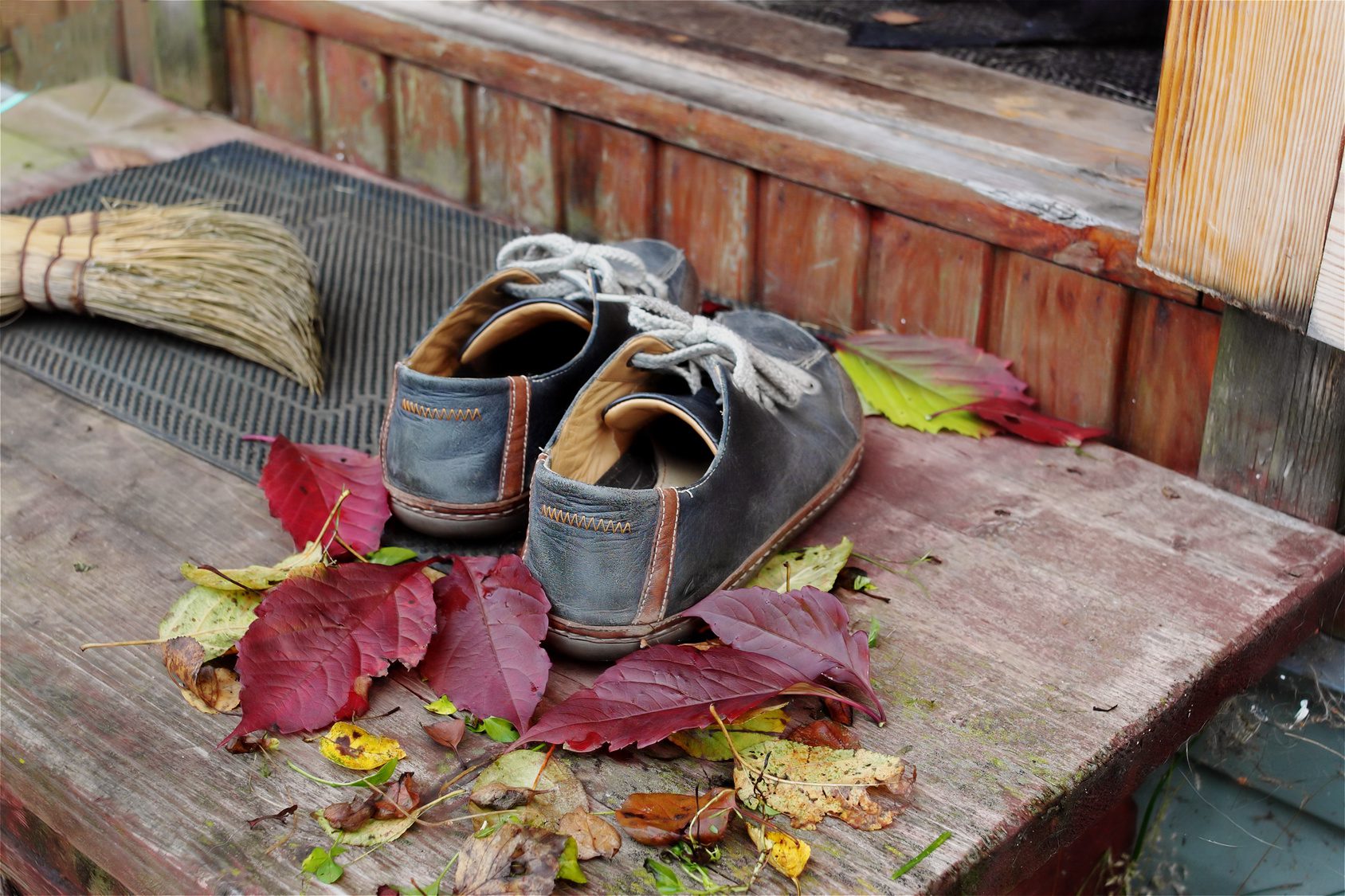You may never have considered taking off your shoes at the door a priority unless you have high standards of household cleanliness or follow an Eastern cultural practice.
Well, it might be time to consider taking up the practice. That’s because there are several health-related reasons to start kicking off your shoes at the door. The soles of your shoes carry dirt. But they also may carry bacteria, viruses, and other pests into your living space. Removing this source of contamination can make your home safer and healthier.
Your shoes come in contact with various dirty surfaces during your day. These may include the floors of public restrooms, restaurants, public transportation, sidewalks, fitness facilities and your workplace. In these spaces, we expect a certain level of cleanliness. But we often have no control over whether the floor is clean or whether a dog recently did his business on the grass you walked on.
In your home, you can control the contamination of dirt from these public spaces by removing your shoes at or inside your entryway. Although developing this new habit may take some adjusting to, it will be worth it for your well-being.
Our household floors are the depositories for debris from our shoes, as anyone who’s ever vacuumed or mopped knows. But the dirt on our shoes isn’t as concerning as the stuff we can’t see.
Bacteria on our shoes can live and grow from the nutrients we provide for them as we walk around picking up more debris. We don’t often clean and disinfect our shoes, so the hazards remain there over time and spread as we walk.
Here’s Why You Should Remove Your Shoes Inside Your Home

So, why exactly should you take off your shoes in the house?
Good Morning America exposed the truth about our shoes when they found the number of bacteria from shoes to be a thousand times greater than that on a toilet seat.
Another study from the University of Arizona found nine different species of bacteria on shoes. The same study also found that 90% of the time, these bacteria can transfer to tile floors. However, carpeting is even worse for harboring bacteria since you cannot disinfect it easily.
Children learning to crawl and spend a lot of time on the floor are the most vulnerable to the bacteria from our shoes. However, it’s not just children that can be affected. It seems applying the five-second rule to food dropped on the floor may be five seconds too long.
There is some debate about whether we are overly clean and causing more health problems due to our over-sanitizing efforts. The pro-dirt side of the debate claims that by removing bacteria from our home environments, our children’s immune systems aren’t able to develop the resistance to fight off allergens and bacteria.
The anti-dirt side might easily win this argument though since the antibiotic resistant bacteria Clostridium difficile (also called C. diff) was found on shoes and can cause painful and deadly intestinal infections. Of course, other bacteria can be on the shoes, the most common being E. coli, likely transmitted to shoes from animal feces.
Other non-bacterial residue that we can track in on shoes includes toxic chemicals from pesticides or poisonous insecticides we come in contact with outside the home. According to an EPA study, our level of exposure to these chemicals that are brought into our homes by shoes may be greater than the pesticides found by eating non-organic produce.
Should Visitors Remove Their Footwear?
Since you are not the only person in your home who has shoe contaminants, handling visitors will require some tact. Fortunately, many professional contractors require their service personnel who enter homes to wear protective booties.
When guests arrive, ask them to please remove their shoes and provide a place for them to sit, for example, a footstool or bench near the door. Consider providing a basket or footwear shelf under your coat rack for a convenient place for shoes. You may also want to provide some clean, one-size slippers or socks if visitors prefer not to be barefoot in your house or if colder temperatures are a factor.
You may find that slipping on a clean pair of slippers or flip-flops for indoor use only is preferable to walking barefoot in your home, depending on the temperature and your personal comfort level. An alternative to leaving shoes at the door would be to carry them to your closet. If you carry your shoes, be sure to wash your hands afterward.
You’re not only relaxing in your home space by going barefoot; you’re making it a cleaner place to live. Kicking off your shoes at the end of the day never sounded so good!

















